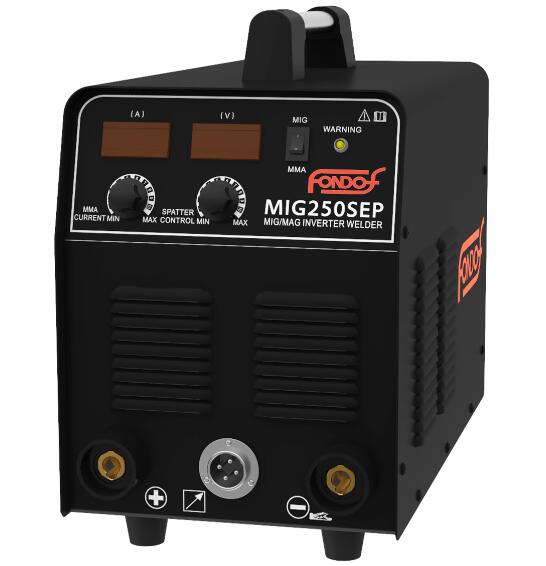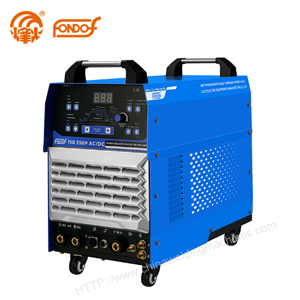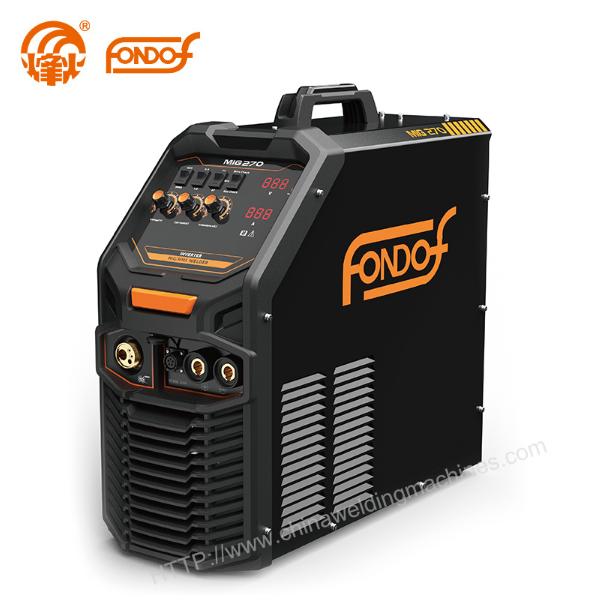WHAT IS METAL ACTIVE GAS (MAG) WELDING?
 Sep. 23, 2022
Sep. 23, 2022
Table of Contents
● What Is MAG Welding Used For?
● How Does MAG Welding Work?
● Advantages of MAG Welding
● Disadvantages of MAG Welding
● MAG Welding FAQs

Mig-Mag Welding Machine
There are a number of methods and processes welders can employ when they’re working on projects. One of the most common welding processes is known as gas metal arc welding (GMAW).
During this process, an electric arc forms between the metal being worked on and a wire electrode. Heat is applied to the pieces and helps melt and fuse them together, forming a permanent bond. GMAW can be split into two main welding categories, metal inert gas (MIG) and metal active gas (MAG).
When it comes to MIG versus MAG welding, the biggest difference is the type of gas used during the process. Only inert gases that don’t experience chemical reactions are used in MIG welds, like helium, argon or a mix of the two. Active gas mixtures like carbon dioxide (CO2) or oxygen mixed with argon are utilized in MAG welds.
Curious to find out more about the specifics of MAG welding? Keep on reading.
What Is MAG Welding Used For?
The MAG welding process can be used within a range of sectors and industries. These can include:
● Manufacturing
● Pipe welding
● Automotive maintenance and production
● Construction and infrastructure
● Shipbuilding
From large industrial facilities to smaller repair shops, MAG welding is a common choice and used for many applications. The active gas mixtures used in the process have primarily been developed for welding steels.
Advantages of MAG Welding
MAG welding is one of the most commonly used welding processes for a reason. It comes with a number of advantages, including:
● High working speed: MAG welding is considered a “one-hand” operation and allows welders to improve control while maintaining a consistent speed.
● A cleaner process: Since a shielding gas is used to protect the arc, there is minimal spatter produced and no slag to clean up afterward.
● Versatility: MAG welding can be performed in most welding positions.
● Cost-effectiveness: Compared with other welding methods, MAG welding can be cheaper over time, since no flux-coated electrode tips are burned through and need to be replaced.
Disadvantages of MAG Welding
While there are many advantages to MAG welding, there are a few downsides to keep in mind:
● Sensitivity to contaminants: Things like rust, dirt, oil and paint can cause issues with MAG welding, which can be sensitive to these substances.
● Can’t be used outdoors: Given that MAG welding utilizes a shielding gas during the process, it can only be done indoors, since wind can blow away the gas and contaminate the project.
● Vulnerable to porosity and lack of fusion: Porosity is caused by trapped nitrogen and oxygen due to poor gas shielding. Insufficient surface cleaning can contribute to the lack of fusion.
How Does MAG Welding Work?
Now that you know a bit about MAG welding, here are some more details to know about the process.
What Gas Is Used for MAG Welding?
MAG welds use active shielding gases. These can be a mixture of CO2, oxygen or argon. Sometimes, a shielding gas is made from 100% CO2.
MAG Welding Process
During the MAG welding process, an arc is formed between the electrode and the work piece. Direct current is used in the process to heat the metal and fuse the two together. The electrode used is continuously fed by a wire feeder into the weld pool.
MAG welding uses an active gas that makes it react well with construction steels and thick to medium-thick sheet metal. MAG welding produces intense heat, which can cause the CO2 to split into carbon monoxide and oxygen. This can cause partial oxidation, which is why MAG is not used for welding light steels or alloy metals.
MAG Transfer Modes
When using MAG welding, one can utilize different transfer modes, which is how metal is sent from the electrode to the work piece. There are four basic modes used with GMAW processes:
● Globular: Weld metal transfers across the arc in large droplets that are typically bigger than the diameter of the electrode. This mode is usually used on carbon steel, making it commonly used with MAG welds that utilize CO2 shielding gases. While it is associated with the use of 100% CO2 shielding, it is also often used with argon and CO2 blends.
● Spray: Tiny droplets of metal are sprayed across the arc, with the result being smaller than the electrode’s diameter. This method utilizes high wire-feed speeds and voltage. To achieve this transfer, binary blends containing argon and 1% to 5% oxygen or argon and CO2 (at levels of 18% or less) are used.
● Short circuit: The electrode comes into contact with the work piece and short circuits, which results in the metal transferring. Short-circuit transfers require low energy, which is an advantage. This mode of metal transfer typically supports the use of 0.025 inch to 0.045 inch diameter electrodes shielded with either 100% CO2 or a mixture of 75% to 80% argon, plus 20% to 25% CO2.
● Pulse-spray: The power supply in a pulse-spray transfer goes between a high-spray transfer and low background current. During each cycle, a single droplet is transferred from an electrode to the weld pool. Argon-based shielding gas selection with a maximum of 18% CO2 supports the use of pulsed spray metal transfer with carbon steels.
MAG Welding FAQs
Now that you know the basics about the MAG welding processes, here are a few quick answers to some frequently asked questions.
● What Does MAG Stand for in Welding?
MAG stands for “metal active gas.”
● Is MIG the Same as MAG Welding?
MIG and MAG welding are both GMAW processes, and the difference between them is the type of gas used. MIG uses inert gases, while MAG uses active gases.
Unlike MIG welding, which typically uses helium or argon, MAG typically uses CO2. Sometimes CO2 or oxygen is combined with argon to create a mixture.



























